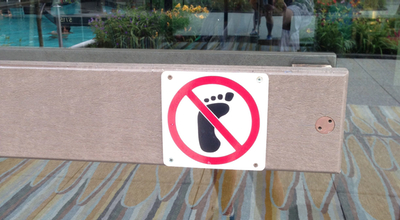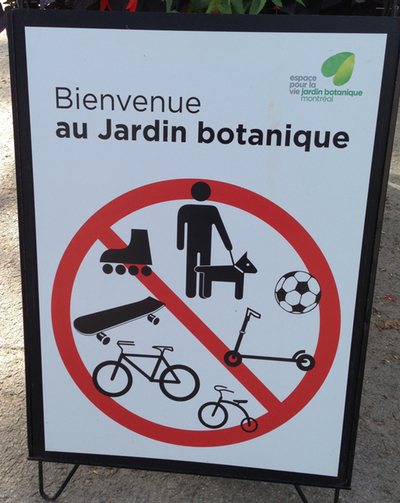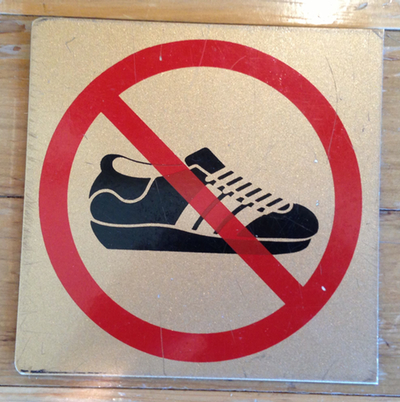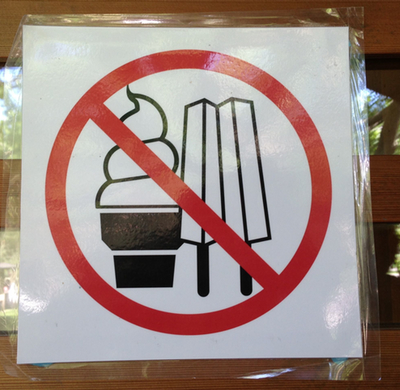
1January
2014
maura @ 10:17 am
Hmm, when I counted up the books on this list I was disappointed to see this year that I didn’t read as many books as last year, only 28 compared to last year’s 36. Starred books are ebooks and tilded books are those I own (rather than borrowed from the library), and the list below is in reverse chronological order. Again this doesn’t count books I read for academic reasons, which would bulk things up a bit. Also I think this reflects that 2013 was perhaps more disjointed than 2012. We didn’t really take any vacations that offered space for lots of reading, and the summer overall (which is when I tend to get most of my non-academic reading done) was sort of scattered. But on the plus side, only one book falls into the started not finished category, so that’s a good thing. And Debt is eNORmous, maybe it should count as several books?
I think I hit the wall with dystopian YA books this past year. I still find them enjoyable to read, but I’m also finding them more disturbing and depressing than I have in the past. I was excited to read Allegiant and wind up the series, but found it kind of meh in the end (though I’m *totally* excited for the movie — when we saw the previews there were shots of Mansueto and the Reg!).
Balancing out the dystopia were some books I really enjoyed. Every Day was fantastic — layered and thoughtful and real. As I babbled about in other posts, I loved Tracey Thorn’s book, Fangirl, and Sisterland. I did a bit of revisiting books I’d already read — Wrinkle in Time and Ender’s Game because Gus was reading them (also the latter to prep for seeing the movie), and Wizard of Earthsea (just finished yesterday!) because I’m thinking that I need to read more LeGuin in the new year and rereading the trilogy (plus the other two Earthsea books I haven’t read) seems like a good place to start.
My reading goal for 2014 is to read more, obvs. I’d like to read all of LeGuin’s work, and possibly reread Octavia Butler’s books (in prep for recommending them to Gus). I have some big holes in my knowledge of feminist theory that I’d like to plug, too. I also can’t wait to read Facing the Other Way: The 4AD Story. And Gus got 21 (!) books for his birthday and xmas some of which I’d like to read too, including a graphic novel series called Amulet and another graphic novel set — this one about the Boxer Rebellion — called Boxers and Saints. He tore through them all in less than a week so they’re uncontested.
With that said, here’s the list:
~ A Wizard of Earthsea, by Ursula LeGuin
~ Hyperbole and a Half, by Allie Brosh
~ Some Assembly Required: A Journal of My Son’s First Son, by Anne Lamott with Sam Lamott
* Sisterland, by Curtis Sittenfeld
Fangirl, by Rainbow Rowell
Allegiant, by Veronica Roth
Wool, by Hugh Howely
* Shards & Ashes, edited by Melissa Marr and Kelley Armstrong
Debt, by David Graeber
First Light, by Rebecca Stead
Among Others, by Jo Walton
~ A Wrinkle in Time, by Madeline L’Engle
Too Big To Know: Rethinking Knowledge Now that the Facts Aren’t the Facts, Experts Are Everywhere, and the Smartest Person in the Room Is the Room, by David Weinberger
Peanut, by Ayun Halliday and Paul Hoppe
~ The Night Circus, by Erin Morgenstern
Mr. Penumbra’s 24 Hour Bookstore, by Robin Sloan
The 5th Wave, by Rick Yancy
~ Bedsit Disco Queen, by Tracey Thorn
* Every Day, by David Levithan
A Darkling Plain, by Phillip Reeve
Legend, by Marie Lu
Requiem, by Lauren Oliver
Infernal Devices, by Phillip Reeve
Bossypants, by Tina Fey
~ Ender’s Game, by Orson Scott Card
~ Why Do I Love These People?, by Po Bronson
The Age of Miracles, by Karen Walker Thompson
Predator’s Gold, by Phillip Reeve
Started not finished:
* Oryx & Crake, by Margaret Atwood
31December
2013
maura @ 8:33 pm
On the last day of the year it’s hard to think of anything other than the past year. I tend to make most of my resolutions on and around the beginning of the new academic year in the fall, because that’s when my work calendar resets. But sometimes I feel like I want to take advantage of the normal new year, too.
Really there can be only one resolution for me this year, and that’s balance. It’s been clear over the past weekish that I haven’t been at work that my shoulder and neck issues are at least in part work-related. Even with the standing desk I probably don’t consider my posture enough when I’m computing, and I haven’t done much keyboard work over the break, which is one big difference from non-vacation times. That’s not to say that computer work is the only culprit as there are definitely other ways I hold my body that cause flare-ups, though I’m usually able to avoid them. Stress likely plays into things as well, though it’s tricky to say how much. Certainly I have sources of stress that are not work-related — stress reduction overall is a good goal.
I’m lucky enough to have a job that I love and to work on projects that I find both interesting and worthwhile. But it’s hard to push back against the academic norms of working or thinking about work all the time, and of measuring our own production in comparison to others, despite differences in life situations, ambitions, age, health, and sleep requirements. So part of my balance goal is to stop worrying about everyone else and find a pace that’s sustainable for me. This almost certainly means that I’ll need to turn down some opportunities that sound interesting and worthwhile, because time is not an unlimited commodity. But I hope that what I gain instead is better focus on the projects I do work on, as well as the shoulder and neck stuff under control.
So, striving for balance in 2014. Happy New Year!
27December
2013
maura @ 9:26 pm
So before you’re all “OMG two posts in one day” I should probably mention that I wrote that last post last night, though wasn’t able to post it until this morning because we didn’t have internet at the neighbors’ apartment where we were staying. This year we’re having a mostly home-based holiday season — though we did travel to exchange gifts with some of my family before xmas, it was a quick trip of only 42 hours duration. Now we have family visiting and took advantage of our neighbors’ generosity to use their place as an extra sleeping space while they’re out of town. It’s nice to travel at xmas though it’s nice to be home, too, with a tree and the kitties.
I recently read two novels in a row about twins, each told from the perspective of one of the twins, which when added to the season has me thinking much more about family than usual. The books were great. First was Fangirl by Rainbow Rowell, about twin girls in Nebraska who write Harry Potter-esque fan fiction and the events of their first year away at college. It was a fun read: the characters were both super likable and since I spend lots of my research and scholarly time thinking about the academic culture of college students it was also interesting from an ethnographic perspective. (Is there a term for ethnographic fiction? Is all fiction ethnographic?)
I was particularly entranced by one scene in which the main character is accused of plagiarism by her English prof when she submits a fic for a creative writing assignment. I scanned those few pages from the book and plan to ask my students to read the excerpt when I next teach our library’s research and documentation course. Which is nerdily exciting — we talk a lot about plagiarism and remix culture and intellectual property, and I’ll be interested to see what the students make of the reading. Plus it’s only 4 pages which is absolutely fair use, so I can post the PDF of the scan on our course website.
Next (and completely accidentally re: the twin theme) I read Sisterland by Curtis Sittenfeld. I’ve never read any of her books before — the cover of Prep, her first novel, completely turned me off and she fell off my radar after that. But reading Jenna’s review of Sisterland piqued my interest, and since it was available as an ebook and I didn’t have any other ebooks checked out it seemed like a good call (I like to have an ebook on my phone if possible, just in case I ever get stuck someplace with nothing to read). And it was! Like Jenna, I found the main characters unsympathetic, but the story was well-paced and interesting.
These twins are adult women who are both somewhat psychic, though one has suppressed her ability. The narrative of the book is framed by an event that happens early on, when the more-psychic sister predicts that an earthquake will strike St. Louis, where the book takes place. The bulk of the book (which is told by the less-psychic sister) recounts the story of what happens with the sisters and their lives and families between the time of the prediction and the date on which the earthquake is predicted to happen. There’s lots of flashbacks to the twins’ childhood and early adult years, and lots of discussion of their ESP and the circumstances under which they’ve used it. What I liked best is that even though the psychic powers lend the book a vaguely magical tone, most of the issues with which the characters grapple are pretty much just normal, everyday problems.
In both books the twin sisters are identical yet surprisingly different, with a relationship at least as complex as that between non-twin siblings. And I guess that’s what made me start thinking about my family. I love my family, though I’m often quite baffled when I think of us. While my nuclear family members — my parents and my younger sister and brother — are (of course!) related and have much in common, we are also each very different. And we all continue to change as we age, which along with partnering and childrearing adds other wrinkles (ha!). My parents are long divorced and we all mostly live far apart, and I wish we saw everyone more often. But I sometimes find myself torn: I don’t want to leave New York to live in one of the places they live, but living here makes it difficult for folks to visit us because NYC apts aren’t great for hosting sleepover visitors. And I wonder: are we all so different because we live in different places? Or do we live in different places because we are all so different?
27December
2013
maura @ 9:15 am
Hi blag. It’s been a long time, hasn’t it? Already the end of December, nearly the new year. I’ve written post after post in my head for over a month now, unable to find slash make the time to get the words out. November was busy (including with lots of scholarly kinds of writing, though not quite as much as I’d hoped), and Thanksgiving was late which lent the whole kid’s birthday + xmas prep a bit more urgency this year, given the time constraints.
Of course the thing about not writing is that with every day you don’t write it’s easier to not write the next day. Or the day after. &tc. And that’s how the not writing becomes a routine, much more comfortable and cozy than even the best writing routine. Because inaction is always easier. This is hardly the worst dry spell I’ve ever had, but it feels yucky nonetheless because I know it’s not for lack of material or even, strictly speaking, lack of time. Yeah, I’m busy, but there’s always time for a bit of writing every day, even if only 30 minutes.
This time around it’s most definitely the blahs that have been slowing me down. Nothing huge, really, but lots of little things adding up. We still haven’t had any bites on our book proposal.* I took on a service commitment at work that’s taken up considerably more time than I’d anticipated. A couple of our household appliances went belly up and it’s taken more cognitive effort than I anticipated to incorporate the new ones into my usual chores routines. Lots of my favorite items of clothing have finally worn out, and clothes shopping is one of my least favorite things ever.
*Lest I seem too mopey about this I should note that when we were at a conference last month we spent a long time hashing out a new book strategy, and we’re definitely on a more productive path now. So a new round of proposals should be ready to go out soon, yay!
And there have been some maybe not so little things too. A colleague in another department died; while he wasn’t a young man, it was still very sudden and sad. A dear friend’s parent died too, not suddenly at all but no less sad. I also learned that a colleague in a different department who I respect very much is leaving the college for another position, a big loss for the students and the college.
In addition to the mental reasons there’ve also been some physical reasons for the blahs. Over the fall I started having persistent neck and shoulder tingling and pain, I think related to something I pulled or strained last winter while shoveling snow. Dr visits + testing revealed that I have 2 herniated discs in my neck, hooray. *Not* hooray at all, really annoying, actually. So I’m going to physical therapy and trying to be careful not to slouch or look down much. Which is a pain in the ass, frankly, because it’s difficult to write (or read!) without looking down.
So, back on the wagon with me, though perhaps climbing on a bit more slowly than before. Aging, sigh.
1November
2013
maura @ 10:21 pm
That’s right, it’s November, the month of writing. Like last year I’m planning to eschew NaBloPoMo in favor of the academic version: AcWriMo. I’ll try not to ignore this blag too much as well, though this has been a low-blagging semester already, so take that with a grain of salt, I guess.
Goals! It’s good to have goals. I’m not going to set a word count goal because I’ve got some deadlines that involve presentations and other non-strictly-writing work that I want to be able to accommodate. Really for me this month should be AcScholMo, because I’m going to count anything I do that’s related to my research and scholarship (as opposed to librarianing or service). This is the first semester since my junior faculty research leave has run out and I am frankly struggling to find time for my scholarship. But I really should be able to fit it in on most days even though there’s always lots going on. At the very least, I have a lunch hour. Right? Right. (She typed optimistically.)
So, my AcWriMo goals for this month include:
– prepping for our undergraduate scholarly habits conference presentation at the American Anthropological Association meetings in three weeks
– thinking on another conference submission due on 11/15
– radical revisions to the book proposal, because we have a new plan (yay for a new plan! related: getting a book contract is hard work.)
– creating a compelling one-sheet description of our book project that we can bring to the AAAs and use when talking with publishers
– once the proposal and one-sheet are done, implementing the radical revisions on the manuscript draft
– is working on the CUNY Games conference a scholarly thing or a service thing? whichever it is, the conference is in January so there will doubtless be lots to do this month
– if I have time, thinking on a possible new idea for a conference proposal that’s not due til January but will take some research to determine whether its truly feasible
There are a couple of potential stumbling blocks too. Thanksgiving, of course — it’s always hard to carve out time for scholarly work when we’re visiting family (and maybe I shouldn’t sweat that too much). Also the 4 days at the anthro conference. I should be able to get some work done on the plane, and with my research partner and I together for 4 days won’t we basically be working much of the time anyway, as we discuss the project nonstop and shop the new and improved book proposal around? Let’s go with yes, and if I end up eating flaming cheese* as we discuss the project then so much the better.
* Because the conference is in Chicago, and apparently saganaki was invented at the Parthenon, a Greek restaurant there. Which I think we went to during orientation week — can any faithful readers confirm that?
ANYway, I’ll check in every so often here, but also will tweet with the #AcWriMo hashtag. Game on!
27October
2013
maura @ 10:37 pm
Not too long ago for family movie night we watched Wreck-It Ralph again (we’d seen it in the theater last xmas). It’s a surprisingly good movie for a Disney not Pixar outing: contemporary enough for today’s videogame kids to find it fun and funny, with lots of nice touches for us old people who actually used to play games in arcades, too. Plus the extended meditation on homonyms duty and doody — what 11 year old (and his parents) wouldn’t find that hilarious?
Ever since then I’ve been thinking about one of the central features of the movie, in which the heroine, Vanellope van Schweetz, spends most of the movie as a “glitch” — a character who is literally unhooked from the main codebase of the game and hops around in the gamespace every time she glitches. Not to give too much away (spoiler alert!), but in the end she triumphs and regains her status as a fully-enmeshed game character (in fact she turns out to be the main character of her game, Sugar Rush). But she also decides to retain her glitch, pointing out that her glitch gives her power that the other characters don’t have, power she can use to her advantage as she races in the game.
I’m sure there are millions dozens of academic papers being written on Wreck-It Ralph as we speak — it really was a fascinating movie on lots of levels, plus fun to watch. What I’ve found myself chewing over since we watched it again is this idea of the existence of a “glitch” in videogames. I hear Gus and his friends talk about glitches and glitching all the time, and the fact that Disney included the concept of glitch so prominently in a major movie suggests that videogame enthusiasts likely all know and understand the term.
What does a glitch mean to gamers? Usually when I hear Gus and pals discuss glitches they’re annoyed or even angry: something in the game hasn’t gone as they expected so they exclaim “ah, the game glitched!” In my observation the “glitch” is used to characterize both unexpected game behavior and the occasional player mistake — sometimes “it glitched!” really translates to “I didn’t mean to do that!” I’ve come to wonder whether the existence of glitches in videogames isn’t a bit like saying you didn’t get the email. It’s 2013 — really, most of the time the email goes through, I’d wager only a very small number of emails truly get lost in the ether.
The temptation to blame player error on glitching is strong, I know. Jonathan, my brother and I play Carcassonne on our phones, and of course you sometimes make a move you didn’t plan to, or forget to put a meeple on your tile before ending your turn. It’s easy to get distracted with a turn-based internet game played on a phone in the odd moments of the day, easy for a finger to slip or for the best place for a tile to elude you until it’s too late. Sometimes I too curse “glitch, glitch!”
I’ve been wondering whether the existence (and prominence) of glitch is a way for players to reconcile themselves with the distance between the player and the gamespace required of videogames. With a board, card, or other analog game it’s not only obvious to the other players when there’s a player error, it’s also recoverable: if all players agree to it, the error can be erased and the player can have a do-over. In turn-based multiplayer videogames a do-over is usually not possible, and it’s sometimes not possible in single-player games either (though you could consider the opportunity to play the game repeatedly as a do-over of sorts). The only do-over in a multiplayer videogame is a complete restart, which the other player(s) might not be willing to agree to. The barrier for do-overs is much lower in meatspace — there’s (potentially) not as much impact on the other players.
So maybe that’s the ultimate role of the glitch: a way for players to save face when they make a mistake in a game that they cannot correct or undo, to give themselves agency in the face of aspects of the game they can’t control?
29September
2013
maura @ 9:13 am
Janelle Monae’s new record The Electric Lady dropped during a particularly busy week — the first week back to school for the K-12 set, the mayoral (and other) primaries — so I was a couple of days late to the party. But I finally picked it up a few days after its release and have found it mighty challenging to listen to anything else since. And also somewhat challenged for words. I’ve been thinking on this blog post for a couple of weeks now and am still not quite sure what to say.
The record is phenomenal, of course, another chapter in Monae’s futurist-feminist-funky-dance universe. I think chapter is an apt descriptor, too — like her other records this one is highly narrative. She builds worlds out of music. It’s a trip.
Like her last record, this one includes two sections — Suite IV and Suite V — and the orchestral tracks that begin each section are lush and dreamy. Suite IV is both more danceable and rocking, both of the singles are from this section (and most of the guest stars, including Prince!), which I suppose makes sense (and mimics her last record, too). Suite V is full of mostly softer grooves, lots of great stuff, but predominantly quiet (excepting the awesome funkfest Ghetto Woman). Sprinkled throughout are hilarious radio bumpers in which DJ Crash Crash takes callers and discusses the exploits of Cindi Mayweather, Monae’s android alter-ego — they give me total flashbacks to De La Soul’s Three Feet High and Rising, a record that knocked my socks off in college. Truly I love it all, but the title track and “Dorothy Dandridge Eyes” are my current favorites.
Someone on twitter said that this is one of the only records that she listens to straight through rather than on shuffle, and something in the way she said it made me think that kids today only listen to music on shuffle, never straight through. I love a good mixtape, but I like an album that fits together well enough to listen to start to finish. Perhaps it’s because I’m old enough to remember the days when I’d have to go to our family’s living room to play records, and listen to one side at a time. And perhaps I’m lazy — I’ve found that I actually listen to 7″ singles more often in our digital age because when you rip them to MP3 you don’t have to get up to change the record so often. And that’s part of making a narrative record, too, the opportunity to listen from beginning to end reveals the story within.
There are other thoughts I’ve had too, but really you should just go read Janelle Monae’s Black Feminist Futures over at The Feminist Wire, because it’s right on.
7September
2013
maura @ 8:19 pm
The semester started over a week ago but the combination of Labor Day and Rosh Hashanah means that the public schools haven’t even started yet, not til Monday. So while things are still beginning-of-the-term nutty (enrollment is up! 3300 first year students! nearly 17K total students! CUNY’s tuition is so reasonable! 142 sections of English I! each has one session of library instruction! wheee!), the end of this week was a bit slower with no meetings, so we decided to hightail it to the Catskills for a last-couple-days-of-summer getaway.
Even though we were only going to be away for a couple of nights, we rented a small house on the recommendation of a friend (as opposed to staying in a hotel). In the summers that we’ve gone to the beach we’ve usually rented houses — with both of my sibs and all of their kids a house is by far the most practical option. Beach houses are pretty standard fare: sand-colored carpeting, VHS tapes from the 80s, dull knives in the kitchen, all manner of lighthouse/sand dollar/sailboaty knick-knacks, and leftover laundry detergent from the prior week’s renters if you’re lucky.
This house was different, and not only because it was smaller. This house most definitely seemed more lived-in. There was the usual random selection of books and board games and DVDs, but also a real kitchen with all the tools and cookware you’d expect for someone who actually cooks there. In a beach house the owners typically have one closet or a shed with their own stuff in it (often locked): the drawers are empty, and you have to bring your own sheets and towels. But in this house the owner’s stuff was right there alongside space for renters’ (our) things — two drawers in each dresser were empty, towels were on the (made) bed and extras in the wardrobe.
It was a lovely house and a nice treat to be able to actually cook dinner without having to curse our forgetting to bring some real knives. But I’ve found myself wondering how, exactly, it works with a house like that. Does the owner live there most of the time and just go somewhere else when there are renters? What if renters stay for a week? Or two weeks? And where does the owner go when she’s not in the house? To stay with friends? Does she have another house? There’s the trustworthiness issue too — how can she be sure that everything will be as she left it? There was a hefty security deposit to put down, so perhaps that’s the insurance. And we’re kind of fussy (unsurprisingly) about leaving things the way we found them so no worries there.
More than anything it seemed like this house had more stories in it than other houses we’ve rented in other places. Being surrounded by all of those belongings that clearly belonged to someone who cared about them made it impossible not to speculate about that person and her stories. I’ve also been reading Among Others by Jo Walton (intrigued by Jenna’s review), and stuff being infused with personal magic plays a big part in the book’s narrative, which I’m sure helped me think about the house in that way, too. I should have been finishing Debt; really I am almost halfway and have renewed it twice and I *do* like it, for real, but it’s just so serious and I was on vacation and wanted to read about fairies and interlibrary loan and adolescence instead. I have ’til September 26 to finish Debt, plenty of time, right?
18August
2013
maura @ 4:39 pm
I need a pop band to come to my assistance. Ever since last May’s Popfest I’ve been thinking about a song that doesn’t exist: a cover version of “Bluebeard” by the Cocteau Twins. A bit of poking around online revealed this fairly true to the original cover version of Bluebeard by someone called Deluciva, as well as this version by Faye Wong which is identical except sung in Chinese.
But neither of these is what I want to hear. The cover version I’m thinking about is a slightly speeded-up track with a male vocalist and far less shimmery guitars, something a bit more spare. Maybe Math & Physics Club could do this cover, or Allen Clapp? The weirdest thing is that this mythological, as-yet-unexisting cover version is actually playing in my head, though of course not precisely because I can only ever understand about 50% of Liz Fraser’s lyrics.
I’m pretty sure the reason for all of this cover version obsession is hearing Cassolette’s cover of the Primitives’ “Crash” while at the Popfest. Cassolette’s version is fairly true to the original but with just enough difference to make it interesting. And of course it’s a fantastic song to begin with, who couldn’t love it?
Cover songs are strange beasts. When I had a radio show in college I used to make mix tapes of cover versions of songs. Some covers I love much much more than the original song, like Bauhaus’ cover of “Telegram Sam” by T. Rex. Others are both wonderful — “The Passenger” by Iggy Pop and the cover version by Siouxsie & the Banshees is firmly in that camp. Still others are kind of a joke but end up being kind of awesome nonetheless, like Age of Chance’s cover of Prince’s “Kiss” and Killdozer’s cover of Janet Jackson’s “Nasty.”
I stopped making covers mixtapes at 4 — someday I’ll find the time to digitize them.
11August
2013
maura @ 4:16 pm
For some reason when we were in Montreal earlier this summer I started cracking up over the number and variety of “don’t” signs. It’s not like they’re unique to the city or even to Canada — of course there are don’t signs in all places that have: 1) people, and 2) restrictions on said people’s behavior. We have them everywhere in NYC, duh. So why did I find them so funny? I think it was the specificity more than anything — some were so very narrow in their proscriptions. Also sometimes the scale of the images on the signs was…off.
The hotel we stayed in had a very neato outdoor pool on the roof, which of course requires many don’t signs because omg pools on roofs, so dangerous!
Don’t fall on this wet floor because otherwise you will turn into a bird.

Also don’t even think of bringing your sparkly ’50s glassware out here, either broken or whole.

When heading inside, kindly leave your feet outside, thanks.

Montreal is very bicycle-friendly, so don’t even think of locking your moped or motorcycle to this bike rack, yo.

We spent lots of time using the Metro to tool around the city, and of course there are lots of things you can’t do on the Metro. Wheeled recreation of many sorts is right out, especially those rollerblades that are the size of a skateboard. Also you may not smoke your skateboard-sized cigarettes in the Metro station, either.

We spent one afternoon at the Biodome, a combination zoo/aquarium/botanic garden kind of place at the old Olympic center that was just lovely (if frightfully crowded). In the Biodome it’s forbidden for you to use your giant hand to grab (or wave at!) the very small otters. You also may not climb whatever that pile of stuff is.

Adjacent to the Biodome is the botanical gardens, which were huge and amazing and in which we spent probably 4 hours on 2 afternoons and still didn’t see it all. Upon entering the gardens you’re greeted with a plethora of restrictions, including not bringing your dog-sized soccer ball (or soccer-ball sized dog?) with you on your visit, again with the humongous rollerblades (perhaps for normal-sized people with enormous feet?), and please leave your many varieties of human-powered wheeled transportation mechanisms for humans of all sizes, from tiny to giant, at home.

In the pavillion in the Japanese Garden you may not wear Adidas. You also may not consume either soft-serve ice cream or classic popsicles from the ’70s. Nikes and ice cream bars are fine, though.


I was so obsessed that it was contagious. Gus’s grandpa sent me this photo from a trip they took after we went home. As if it weren’t totally obvious, please don’t dance with your refrigerator.

|














